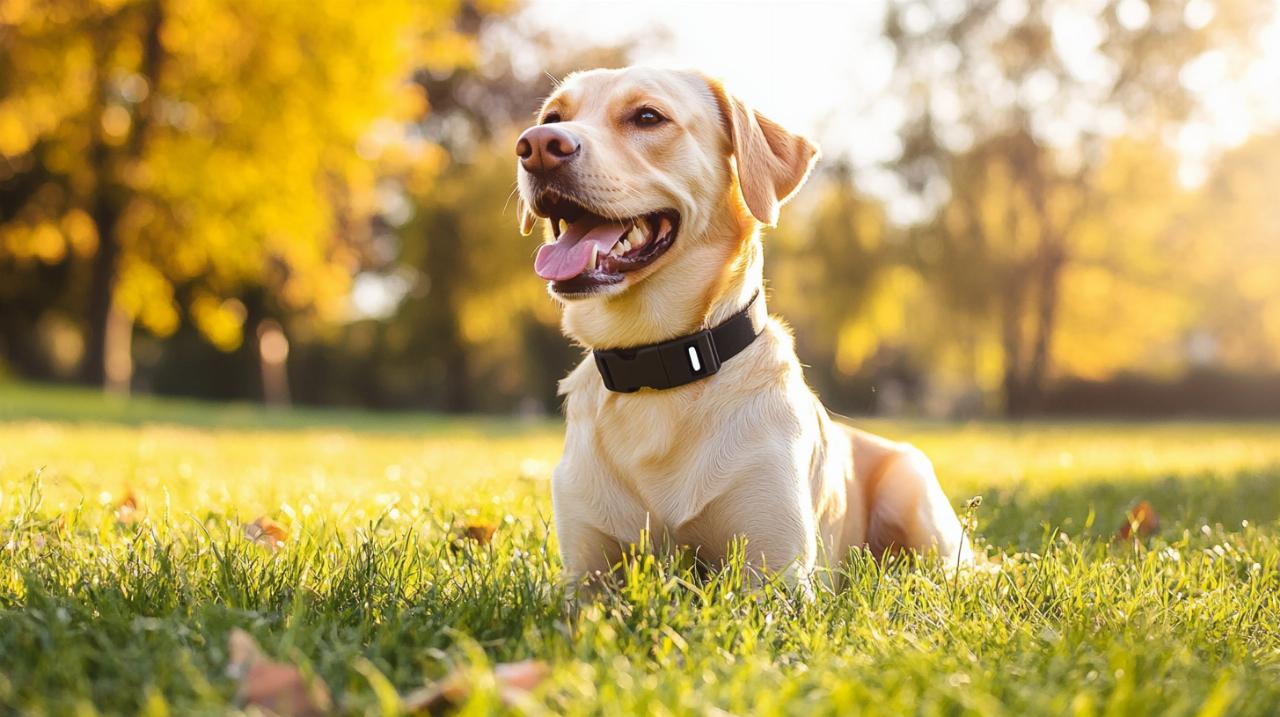Selecting the appropriate GPS collar size for your dog is a crucial decision that impacts both their safety and overall comfort. With the variety of options available on the market, it can be overwhelming to determine which collar will provide the best fit and functionality for your furry companion. A properly fitted GPS collar not only ensures that your dog remains comfortable during daily activities but also guarantees that the tracking technology works effectively, giving you peace of mind whether you’re at home or exploring the great outdoors.
Understanding the Importance of Proper GPS Collar Fit
Why collar size matters for your dog’s safety
The significance of choosing the correct collar size cannot be overstated when it comes to your dog’s wellbeing. A collar that is too tight poses serious risks, including restricted breathing and potential damage to the trachea. Dogs that experience discomfort from an overly snug collar may exhibit behavioural changes, such as increased scratching, licking, or biting at the collar area. On the other hand, a collar that is too loose presents its own set of dangers. If the collar is not secure, your dog may slip out of it entirely, which can be particularly hazardous in busy areas or near roads. Additionally, a loose collar can become snagged on objects, leading to injury or panic. Ensuring a proper fit is therefore essential to prevent these potential hazards and to keep your dog safe and content.
How a well-fitted collar ensures gps accuracy
Beyond comfort and safety, the fit of a GPS collar directly influences the accuracy and reliability of the tracking device. A collar that is positioned correctly on your dog’s neck allows the GPS unit to maintain optimal contact and orientation, which is vital for consistent satellite or cellular signal reception. If the collar shifts too much or sits incorrectly, the tracking data may become less accurate, making it harder to locate your dog in real time. This is especially important for dogs that are prone to wandering or those that spend time in varied environments where quick location updates are necessary. By ensuring a snug yet comfortable fit, you maximise the performance of the GPS technology and enhance your ability to monitor your dog’s movements effectively.
Measuring Your Dog’s Neck for the Perfect Fit
Tools and Techniques for Accurate Neck Measurements
To achieve the ideal collar fit, it is essential to measure your dog’s neck accurately. Start by using a soft measuring tape, which is flexible and conforms to the natural contours of your dog’s neck. If you do not have a measuring tape on hand, a phone charger cable or a piece of string can serve as a useful alternative. Simply wrap the material around the base of your dog’s neck, where the collar would naturally sit, and mark the point where the ends meet. This measurement represents the circumference of your dog’s neck. Once you have this figure, add approximately two inches to account for the necessary space that ensures comfort and safety. This extra allowance is crucial as it allows you to fit two fingers snugly between the collar and your dog’s neck, which is the standard guideline for a proper fit.
Common mistakes to avoid when measuring
While measuring your dog’s neck may seem straightforward, there are several common errors that can lead to an ill-fitting collar. One frequent mistake is measuring in the wrong spot, such as too high on the neck or too low near the shoulders, which can result in inaccurate sizing. Another pitfall is failing to account for growth phases, particularly in puppies, whose neck sizes can change rapidly. It is also important not to prioritise style over function when selecting a collar, as an attractive design will not compensate for a poor fit. Additionally, many pet owners neglect to check the collar fit regularly, especially as their dog’s weight fluctuates or as they age. Ignoring signs of discomfort, such as chafing, hair loss, redness, or irritation, can also lead to more serious issues. By being mindful of these common mistakes, you can ensure that your measurements are accurate and that your dog remains comfortable and secure.
Consulting manufacturer size guides
Why size charts vary between brands
Once you have your dog’s neck measurement, the next step is to consult the size guide provided by the manufacturer of the GPS collar you are considering. It is important to note that size charts can vary significantly between different brands, as each company may have its own specifications and design features. Factors such as the materials used, the style of the collar, and the intended use can all influence the recommended sizing. For instance, a collar designed for rugged outdoor adventures may have a different sizing system compared to one intended for everyday use. Understanding these variations is essential to ensure that you select the correct size for your specific collar model. Always refer to the manufacturer’s guidelines rather than assuming that a standard size will be consistent across all brands.
How to interpret size guidelines correctly
Interpreting size guidelines correctly is crucial to finding the right fit for your dog. Most manufacturers will provide a size range based on neck circumference and weight categories. For example, a small collar might be recommended for dogs with a neck measurement of ten to sixteen inches and a weight range of twenty to thirty-five pounds, while a large collar could be suitable for dogs measuring eighteen to twenty-six inches and weighing fifty to eighty pounds. When reviewing these guidelines, it is helpful to cross-reference your dog’s actual measurements with the provided ranges. If your dog’s neck size falls on the borderline between two sizes, consider opting for the larger size to allow for adjustments and to ensure comfort. Additionally, many manufacturers will include notes about specific features, such as adjustability or padding, which can further guide your decision. Taking the time to carefully review and understand these size charts will help you make an informed choice that supports both safety and comfort.
The Two-Finger Rule for Comfort and Security
Testing the Fit with the Two-Finger Method
One of the most reliable methods for ensuring that a GPS collar fits correctly is the two-finger rule. This simple yet effective technique involves sliding two fingers between the collar and your dog’s neck once the collar is fastened. If you can comfortably fit two fingers under the collar without excessive force, the fit is generally considered appropriate. This test confirms that the collar is snug enough to remain securely in place but not so tight that it causes discomfort or restricts your dog’s breathing. The two-finger rule is universally recommended by pet care experts and is an easy way to quickly assess the fit of any collar. It is particularly useful when you are adjusting the collar for the first time or checking the fit after your dog has grown or their weight has changed.

Ensuring your dog’s collar isn’t too tight or loose
Ensuring that your dog’s collar is neither too tight nor too loose is fundamental to their safety and comfort. A collar that is excessively tight can lead to a range of problems, including breathing difficulties, damage to the trachea, and discomfort that may manifest as behavioural changes or physical symptoms such as chafing and hair loss. Conversely, a collar that is too loose presents the risk of your dog slipping out of it or the collar becoming caught on objects, which can cause injury or panic. Regularly checking the fit using the two-finger method is essential, particularly during periods of rapid growth in puppies or weight fluctuations in adult dogs. By maintaining this balance, you can ensure that your dog remains safe and comfortable while wearing their GPS collar.
Considering your dog’s breed and coat type
Adjusting Collar Size for Fluffy and Long-Haired Breeds
The breed and coat type of your dog play an important role in determining the appropriate collar size. Dogs with thick, fluffy, or long hair may require additional consideration when measuring for a collar. The bulk of the fur can affect the accuracy of your initial measurement, so it is advisable to compress the coat gently when taking the measurement to get a more accurate reading of the actual neck circumference. For breeds with particularly dense fur, you may need to add a bit more space to the collar to prevent matting or discomfort. Additionally, waterproof or easy-to-clean collar materials, such as neoprene or biothane, are often recommended for dogs with longer coats, as these materials are less likely to trap moisture and odour. By taking your dog’s coat type into account, you can select a collar that is both functional and comfortable.
Special considerations for different breed sizes
Different breeds have unique physical characteristics that should influence your choice of collar size and style. Large breeds typically require more durable and wider collars to withstand their strength and size, while small and toy breeds benefit from lightweight and narrower collars that do not overwhelm their delicate frames. For instance, toy breeds may need soft, padded collars to provide extra comfort and reduce the risk of injury. Thick-necked breeds, such as bulldogs, often require adjustable collars with strong hardware to ensure a secure fit. Short-nosed breeds, such as pugs, may benefit more from a harness than a collar, as harnesses reduce pressure on the trachea and make breathing easier. Understanding these breed-specific considerations is crucial to selecting a collar that supports your dog’s health and wellbeing.
Choosing adjustable collars for growing puppies
Benefits of adjustable gps collars
For puppies and dogs that are still growing, adjustable collars offer a practical and cost-effective solution. These collars feature multiple sizing options that can be easily modified as your dog grows, eliminating the need to purchase new collars frequently. Adjustable collars are particularly beneficial during the rapid growth phases that puppies experience, ensuring that the collar can be loosened or tightened as needed to maintain a proper fit. Many modern GPS collars are designed with adjustability in mind, incorporating features such as multiple buckle holes or sliding clasps that allow for precise customisation. This flexibility not only supports your dog’s comfort but also ensures that the GPS device remains in the optimal position for accurate tracking. Investing in an adjustable collar is a wise decision for pet owners who want to provide consistent safety and comfort as their dog matures.
When to replace your puppy’s collar
Even with an adjustable collar, there will come a time when a replacement is necessary. Puppies grow at varying rates, and it is important to monitor the collar fit regularly to determine when an upgrade is needed. A good rule of thumb is to check the collar fit weekly for puppies, as their neck size can change rapidly during the early months of life. If you find that the collar can no longer be adjusted to fit comfortably or if the two-finger rule can no longer be satisfied, it is time to purchase a new collar. Additionally, wear and tear on the collar materials, such as fraying, damaged hardware, or loss of elasticity, are signs that a replacement is necessary. Ensuring that your puppy’s collar is in good condition and fits properly is essential to their safety and to the continued effectiveness of the GPS tracking technology.
Ensuring your dog’s happiness and gps functionality
Signs your dog is comfortable with their collar
A well-fitted collar should not cause any noticeable discomfort or behavioural changes in your dog. Signs that your dog is comfortable with their collar include a relaxed demeanour, normal activity levels, and an absence of any attempts to scratch, lick, or bite at the collar. If your dog shows signs of distress, such as excessive scratching, redness, chafing, hair loss, or behavioural changes like increased agitation or withdrawal, it is important to reassess the fit of the collar immediately. Additionally, check for any odour or discharge around the collar area, as these can be indicators of skin irritation or infection. A comfortable dog is a happy dog, and ensuring that the collar fits correctly is a key part of maintaining their overall wellbeing. Regular inspections and adjustments will help you identify and address any issues before they become more serious.
Maximising GPS Performance with a Proper Fit
A properly fitted GPS collar not only supports your dog’s comfort but also maximises the performance of the tracking device. When the collar is positioned correctly on your dog’s neck, the GPS unit can maintain a stable orientation and optimal signal reception, whether it relies on satellite or cellular technology. This is particularly important for features such as real-time tracking and geofencing, which depend on accurate and consistent location data. A collar that shifts excessively or sits incorrectly can result in delayed updates or inaccurate readings, which can be frustrating and potentially dangerous in situations where quick location identification is critical. By adhering to the sizing guidelines, using the two-finger rule, and regularly checking the fit, you can ensure that your GPS collar performs at its best. This combination of comfort and functionality will give you the confidence that you can locate your dog quickly and efficiently, no matter where their adventures take them. For additional resources and guidance on pet safety products, you may also explore helpful information available on the ofertaplus website.





